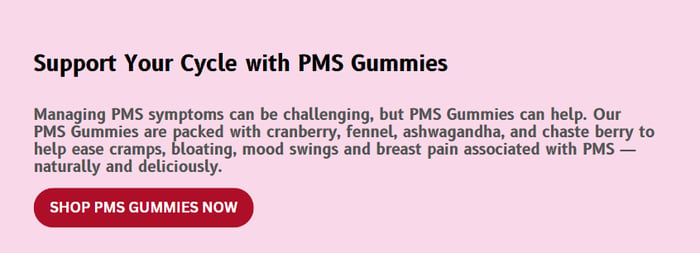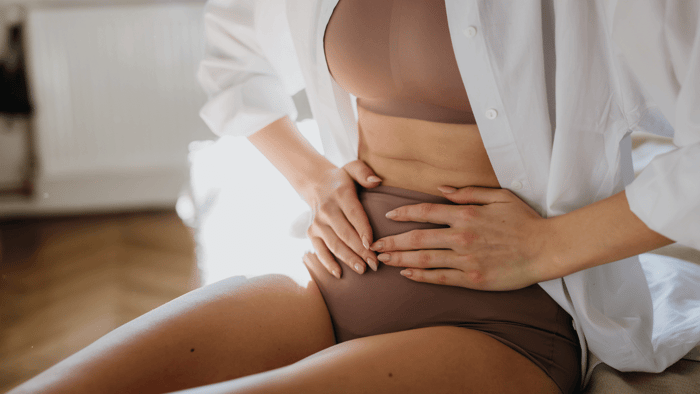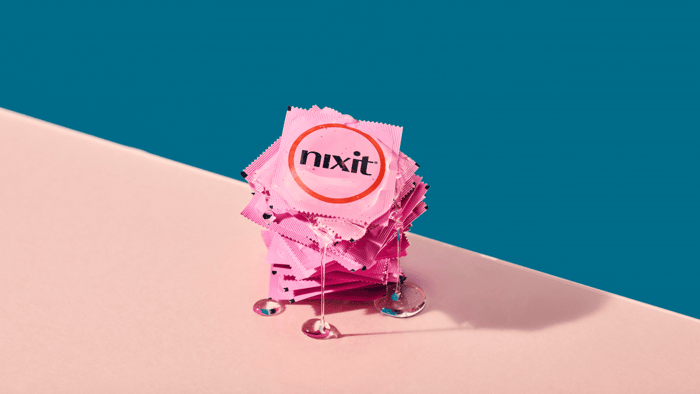PMS doesn’t just sneak up on you—it builds. Slowly. Silently. And sometimes with a dramatic flair. If you’ve ever burst into tears over a sad playlist or snapped at someone for chewing too loud, only to realize your period is around the corner—you know the drill. But when does PMS actually start, and why does it feel like a different version of you moves in before your period begins?
Let’s dig into how PMS unfolds across your cycle, how long it tends to linger, and why it might be changing as you age.
Table of Contents
The Luteal Lowdown: Where PMS Begins
Your cycle has two main halves: the follicular phase (before ovulation) and the luteal phase (after ovulation). If you're not sure what all these phases mean, or want a deeper understanding of what PMS actually is, we've got you covered — check out our full blog on what PMS is and why it happens. PMS sets up camp in the luteal phase—the time between ovulation and your next period. It’s when progesterone levels rise, peak, and then crash. And that crash? That’s where the chaos starts.
For most people, symptoms begin 5 to 10 days before menstruation and fade once bleeding begins. That said, PMS can vary wildly. Some people feel off for two full weeks, while others notice just a few cranky days before their period.
If you track your cycle regularly, you’ll start to see a pattern: the bloating, the brain fog, the cravings—they’re not random. They’re hormonal.
Your Body on PMS: What to Expect
Mood swings, cramps, food cravings, breast tenderness, sleep issues, fatigue—PMS can show up in many forms. And sometimes, the cramps kick in a few days to a week before your period even begins (yep, those aren’t technically menstrual cramps). These are often due to hormonal shifts affecting your pelvic muscles and nerves.
This is where cycle-supportive tools can really help. Our PMS Gummies, for example, contain natural ingredients like chaste berry and ashwagandha, designed to help ease tension, reduce bloating, and bring you back to yourself—whatever version that is.
"You could sleep through a car crash." – Sound familiar? It’s a PMS vibe.
The Shifting Shape of PMS
Age Matters
Your PMS in your 20s might not look like your PMS in your 40s. As you age and enter perimenopause, estrogen levels fluctuate more unpredictably. That hormonal rollercoaster can make PMS symptoms feel more intense or erratic.
Birth Control and PMS
Some forms of hormonal birth control blunt the hormonal fluctuations that cause PMS, making symptoms less noticeable. But others might still trigger mood swings, headaches, or bloating. Everyone reacts differently—it depends on your body and the type of birth control you use.
Post-Menopause PMS?
Technically, PMS ends with menopause (because you’re no longer ovulating). But some people report PMS-like symptoms even after their periods have stopped. That’s often a sign of ongoing hormonal imbalances—or just life stress masquerading as hormones. Either way, it’s worth a chat with your healthcare provider.
Cycle Support, the nixit Way
No matter where you are in your cycle, or your life, there’s a version of you trying to feel better. Whether you're curled up in bed, crying at dog videos, or rage-cleaning your kitchen, nixit is here for every you.
Our PMS Gummies are vegan, naturally flavored, and made with ingredients like cranberry, fennel, and chaste berry to help with cramps, mood changes, bloating, and breast tenderness.
Explore PMS Gummies
Frequently Asked Questions: PMS, Periods & Everything In Between
What is PMS?
PMS, or premenstrual syndrome, is a mix of emotional, physical, and behavioral symptoms that occur before menstruation. Learn more about PMS here.
How long does PMS last?
Typically 3 to 10 days before your period begins, though this varies for each person.
When does PMS happen?
During the luteal phase—after ovulation and before your period.
When do PMS cramps start?
Usually a few days to a week before your period, caused by hormonal shifts.
How many days before your period does PMS start?
Most people feel PMS symptoms 5 to 10 days before menstruation.
Do you still get PMS on birth control?
Possibly. Some experience reduced symptoms; others still deal with bloating or mood swings.
Does PMS get worse with age?
Often, yes—especially during perimenopause when hormones fluctuate more.
Why do I have PMS after menopause?
Technically, you shouldn't. Persistent symptoms may indicate other issues—speak with a healthcare professional.
nixit PMS

$35.00
Our PMS gummies are designed to ease common PMS symptoms like bloating, breast pain, and cramps. Made with herbal supplements including chaste berry, fennel, and ashwagandha, they help support hormonal balance, immune system health, and stable energy levels. Our vegan… read more





